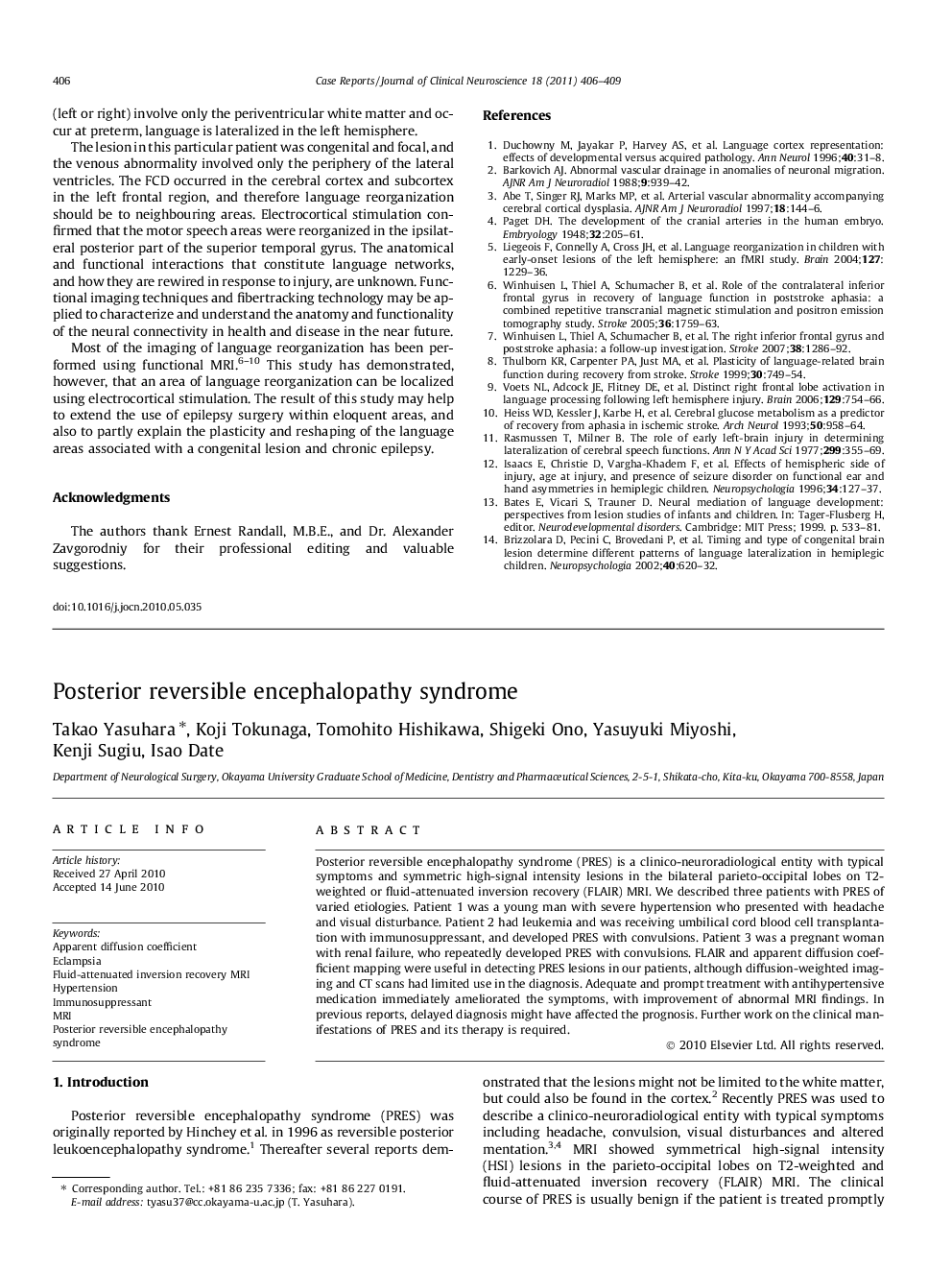| Article ID | Journal | Published Year | Pages | File Type |
|---|---|---|---|---|
| 3061671 | Journal of Clinical Neuroscience | 2011 | 4 Pages |
Posterior reversible encephalopathy syndrome (PRES) is a clinico-neuroradiological entity with typical symptoms and symmetric high-signal intensity lesions in the bilateral parieto-occipital lobes on T2-weighted or fluid-attenuated inversion recovery (FLAIR) MRI. We described three patients with PRES of varied etiologies. Patient 1 was a young man with severe hypertension who presented with headache and visual disturbance. Patient 2 had leukemia and was receiving umbilical cord blood cell transplantation with immunosuppressant, and developed PRES with convulsions. Patient 3 was a pregnant woman with renal failure, who repeatedly developed PRES with convulsions. FLAIR and apparent diffusion coefficient mapping were useful in detecting PRES lesions in our patients, although diffusion-weighted imaging and CT scans had limited use in the diagnosis. Adequate and prompt treatment with antihypertensive medication immediately ameliorated the symptoms, with improvement of abnormal MRI findings. In previous reports, delayed diagnosis might have affected the prognosis. Further work on the clinical manifestations of PRES and its therapy is required.
